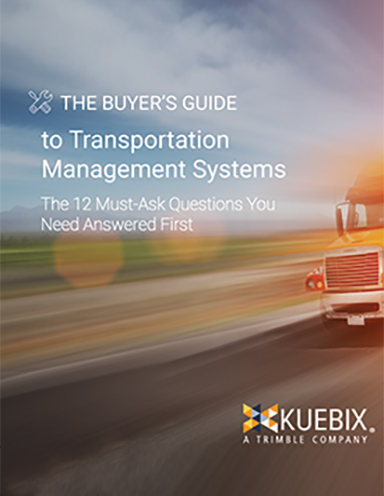Supply Chains Brace for Hurricane Florence Impact

Even in downgrading Florence, which is expected to crash into the Carolinas late Thursday night or early Friday, the National Hurricane Center predicted “life-threatening storm surge,” “catastrophic flash flooding and prolonged significant river flooding,” and “damaging hurricane-force winds.”
Preparing for Hurricane Florence
Hurricane Florence is poised to be one of the most disastrous hurricanes to ever hit the Eastern Seaboard of the United States.
The Wall Street Journal reports that Florence weakened overnight and was downgraded to a Category 2 hurricane.
Still, it is expected to remain an “extremely dangerous major hurricane” when it nears the coast late today.
BMW AG says railcars transporting vehicles to the Port of Charleston for export were diverted to holding areas.
More than 400 automotive suppliers are in South Carolina, and a supply-chain disruption could be far reaching.
The Port of Virginia will remain open as the storm tracks farther to the south but Charleston expects to be closed into the weekend.
Supply chains are expecting major disruption due to Hurricane Florence
Residents of east coast states are stocking up and buckling down ahead of Hurricane Florence.
Local governments are handing out sand to use in defense of flooding, residents are flocking to grocery stores to stockpile bottled water and non-perishable foods, and emergency supplies such as backup generators and plywood are flying off of hardware store shelves.
Virginia, North Carolina and South Carolina have already declared a state of emergency due to Hurricane Florence.
Ahead of any major weather event, retailers experience huge surges in sales as everyone stockpiles the goods they may need to weather the storm.
This causes unforeseen demand spikes and wide-spread out-of-stocks, meaning that retailers need to scramble to keep up with unexpected sales. Many retailers rely on the spot market to find additional capacity as they rush to fill both store orders and online orders.
Read the Article: New Service to Provide Shippers More Truckload Rates and Available Capacity
Long before a storm makes landfall, supply chains are already bracing for their impact.
Once Hurricane Florence hits the east coast, all supply chain activity in the hardest hit areas is likely to come to a complete halt.
Roads will be flooded or impassible due to debris, airports will be shut down, and transportation workers will be evacuating with their families.
Many trucks are likely to get stranded before arriving at their destinations and communication will be critical.
What can companies do to prepare their supply chains?
Preparedness is the key for supply chains to successfully weather a major hurricane like Florence.
Companies transporting goods should leverage technology to retain visibility to shipments, find the best carriers and manage an increased number of orders due to a spike in demand.
Shippers should closely monitor federal and state announcements and stop sending to zip codes that have been closed to deliveries.
Once the storm passes, companies with strong supply chains can aid in emergency distribution and can help with rebuilding efforts.
Note: Satellite image provided by U.S. National Oceanic and Atmospheric Administration (NOAA)
The American Logistics Aid Network (ALAN) said earlier today it is “mobilizing for action” and is getting the word out to logistics, supply chain, and freight transportation interests to follow suite.
ALAN said it has activated a hurricane microsite, www.alanaid.org/operations, which it said enables companies and organizations to monitor each storm’s path, view recent alerts and get updates on transportation and supply chain conditions in impacted areas.
“This site serves as the centerpiece of our efforts to keep people informed about key safety and supply chain developments in the days ahead,” said Kathy Fulton, ALAN’s Executive Director, in a statement. “It’s also where ALAN will relay requests for hurricane-related logistics assistance.”
Fulton added that, while some of these requests may be immediate, most could take far longer to emerge, because it often takes several days or weeks after a storm hits in order for government and relief organizations to assess impacts and determine which goods and services are most needed.
In the meantime, logistics professionals can help ALAN pave the way for quicker post-hurricane recovery by staying safe (including giving employees in potentially impacted areas ample time to prepare and/or evacuate), steering clear of collection drives (which can clog disaster-impacted supply chains and inadvertently do more harm than good) and staying tuned, because significant opportunities to help will ultimately arise.
“Logistics challenges and costs are among the largest hurdles that most relief organizations face after a disaster,” Fulton said. “While we certainly hope that none of these storms will be as destructive as predicted, we’re glad to be part of an industry that can provide so many meaningful solutions – and grateful to the many companies that are already making it possible for us to help.”

Article Topics
Kuebix News & Resources
Visibility + TMS = A Winning Combination Trimble Placed in 2021 Gartner Magic Quadrant for Real-Time Transportation Visibility Platforms Kuebix Positioned Again as a Challenger in 2021 Gartner Magic Quadrant for TMS The Buyer’s Guide to Transportation Management Systems TMS Update: Adoption accelerates The Logistics of Valentine’s Day during COVID-19 Pandemic Research: Trends in the Supply Chain and Their Impact on the Transportation Management System Market More KuebixLatest in Transportation
Talking Supply Chain: Doomsday never arrives for Baltimore bridge collapse impacts Amazon Logistics’ Growth Shakes Up Shipping Industry in 2023 Nissan Channels Tesla With Its Latest Manufacturing Process Why are Diesel Prices Climbing Back Over $4 a Gallon? Luxury Car Brands in Limbo After Chinese Company Violates Labor Laws The Three Biggest Challenges Facing Shippers and Carriers in 2024 Supply Chain Stability Index: “Tremendous Improvement” in 2023 More Transportation














